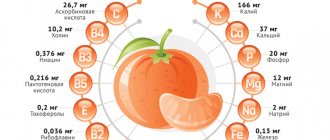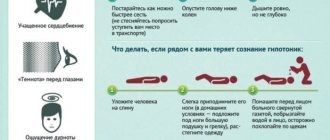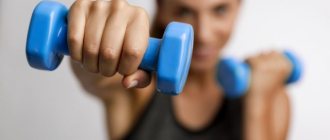Technological progress has simplified man’s existence, but led him to a sedentary lifestyle. The result was chronic diseases and extra pounds. If the mention of sports activity worsens your mood, but you want to get your body in good shape, then you can start with a regular walk. Walking will quickly improve the condition of the body, because it belongs to a special group of physical activity called “cardio”.
Cardio training is exactly the case when, at the same time as strengthening the body, exercise helps get rid of subcutaneous fat. Movement restores and maintains the health of the heart and blood vessels, increases endurance and normalizes metabolism. In addition, cardio exercise helps a person understand how and why they need to lead an active lifestyle. You just have to start.
What is cardio exercise?
Cardio training is a type of physical activity in which the heart works at an increased rate, and the source of energy is subcutaneous fat and glycogen. Loads of this kind have a positive effect on the functioning of organs, strengthen blood vessels, develop the respiratory system, increase endurance and help lose weight.
The training is characterized by a minimal set of strength exercises and, although it involves various muscle groups, does not lead to an increase in muscle mass. This type of load is usually present in any fitness program, but is also quite suitable for training at home. In this case, a necessary condition for effectiveness is increased heart rate values.
Exercise accelerates the heart muscle to the required number of contractions, during which the body activates metabolism and biochemical processes. Maintaining the heart rate within the specified limits for 30-60 minutes ensures a high-quality training result, but exceeding the specified limits already poses a health hazard. Therefore, during the lesson, constant monitoring of the state of the above parameters is necessary.
Why do you need to train your heart and blood vessels?
Physical activity has a healing effect on the body:
- Normalizes body weight.
- Serves as a prevention of cardiovascular pathologies.
- Reduces blood pressure and triglyceride levels.
- Reduces the amount of C-reactive protein, which causes inflammation in the body.
- Regulates blood sugar and insulin levels.
- The force of heart contractions during exercise increases, thus training it.
Vessels suffer from constant stress, poor environment, and irregular nutrition. As a result, blood pressure rises and the cardiovascular system is stressed. The current situation cannot be corrected with medications alone; it is important to improve blood circulation, including in the capillaries.
Types of Cardio Training
The most common cardio workouts that can be practiced even outside the gym are:
- walking;
- run;
- jumping rope;
- skis;
- swimming.
In fitness centers, such loads include exercises on certain types of exercise equipment (steppers, ellipses, bicycles and others), aerobics, dancing, circuit and interval intensive exercises, team sports (tennis, football and volleyball).
Walking
A natural type of activity for everyone, suitable for people with heart disease and obesity. Walking is also recommended when exercising during the rehabilitation period after injuries. In addition, this is a good solution for beginners in sports and those who cannot find time for training. Unlike running, movements do not put a lot of stress on the body, in particular on the joints, spine and muscles.
It is advisable to practice walking daily, alternating fast steps with regular ones. They should be frequent and short, since wide movements of the legs can cause pain in the hips and feet. When walking uphill, your exercise efficiency increases, which helps you burn more calories. Nordic walking and movements on an inclined treadmill show excellent results in health improvement.
So, in order to get the same calorie expenditure when replacing running with walking, you need to spend approximately 2 times more time. For example, 40 minutes of cross-country is equivalent to 80 minutes of walking at an accelerated pace (150 steps/min).
Run
Jogging is an effective and simple cardio workout that will boost your energy and burn a lot of calories. Moreover, such activity is equally useful both on the street and in the gym, and the intensity will depend on the state of health. Contraindications for running include knee problems and excess weight.
Long-lasting and quick results will be achieved by running at medium speed for 1 hour, 3-5 times a week. Beginners are advised to start with 10 minutes a day, adding 120-180 extra seconds each session. You can train for 20 minutes, but in this case you need to take walking breaks. In addition, while jogging, it is important to monitor your breathing and pulse. If your health is not ideal, then before starting exercise it is better to consult a doctor so that he can select the intensity of movements.
Swimming
In just an hour of swimming in the pool you can burn 600 kcal. This type of cardio does not load the spine and joints, but uses a large number of muscles at a fairly moderate intensity. Continuous movement in water increases the volume of the lungs, which improves the supply of oxygen to the body and increases blood circulation. In addition, swimming does not release the same amount of lactic acid as training on land.
Successful burning of fat and pumping muscles will be ensured by attending water classes regularly 3-4 times a week. During training, you should combine the use of different styles and movement in the pool at a fast pace. The processes will become even more effective if you practice under the guidance of an experienced trainer. Instructors at the La Salute fitness club prepare an individual cardio program for each client, adjusting the load to lead even a beginner to an ideal result.
Bike
The advantage of cycling is that there is no shock load on the joints and bones. Cardio training burns about 550 kcal per hour, “dries out” the leg muscles and is suitable for both beginners and more advanced athletes. The result is ensured by riding 3 times a week for 30 minutes. Moreover, exercising on an exercise bike in the gym is not inferior to pedaling on the street in terms of load efficiency.
Exercise equipment
Working on such equipment simulates running, walking, rowing, cycling and other types of training. The movements pump up almost all muscle groups and, if desired, provide high intensity, but at the same time put minimal stress on the joints. In addition, the exercise machines can always be programmed to control your stay in the cardio zone. Also, when exercising in the gym, it is easier to exercise under the supervision of a trainer.
Aerobics
A mix of elements accompanied by energetic music not only strengthens your overall physical condition, but also increases joint mobility, forms a muscle corset, and helps you lose weight. Exercise increases lung capacity and saturates tissues with oxygen. In addition, aerobic exercise calms the nervous system, counteracts stress and improves sleep.
The expected effectiveness is achieved only through regular exercise with a sufficient number of repetitions, performed at low or medium intensity. It is better to start with light training and increase the load gradually (by 10% per week).
Any combination of cardio activity or doing different types of exercise every other day is acceptable. This will pump up all muscle groups and make the body as developed as possible.
Developing endurance and training the heart
Let's talk about developing endurance. There is an opinion that endurance is a quality based on muscle preparedness and psychological motivation. This is true, but partly. Endurance depends, for the most part, on the correct and efficient functioning of the heart. And it is heart training that is the “key to success.”
As many renowned survival experts like to say, the best defensive tactic is a deliberate escape. Yes, “not like a man.” Yes, “for the weak.” But in hospitals and morgues there are plenty of those who neglected the effectiveness of running. As, indeed, those who tried to escape, but could not due to lack of stamina. After all, it is far from a fact that the runner will not be caught up. And if a sprint jerk does not help you break away and get to a safe territory, then you will have to switch to marathon running. And here it all depends on whether the heart can cope with the sudden load or not.
Yes, exactly the heart. Strengthening muscles and increasing physical strength is not as difficult as training the heart and developing endurance. Because this process is slow and gradual. And for a more effective understanding of it, it is worth understanding what endurance is and what patterns are characteristic of it.
Developing endurance and training the heart: how are they related in practice?
Here are the basic principles of the relationship:
- The greater the body weight , the more blood and oxygen it needs. This applies to both muscle and fat mass.
- The more blood is needed , the larger the volume of the heart itself must be, and the more often it must contract to ensure the necessary blood flow.
- The larger the heart , the more blood it can transfer in one contraction. And the less often he needs to contract.
- The less often the heart needs to contract , the slower it wears out.
To give you an even better understanding of the situation, every 10 extra pounds, be it fat or muscle, requires 3 additional liters of blood per minute. If this blood is not provided to the body, muscle function is seriously impaired. And the heart will overexert itself in attempts to provide the body with the necessary resource.
In an ordinary person who has not bothered to develop endurance, but has not pushed his weight, intense exercise causes the heart rate to increase to 180 beats per minute. This is enough to intensively move the required 4 liters of blood through the body. There is enough oxygen, the muscles function, only the heart and respiratory system get tired. If we are dealing with a person who, say, intensively built up his muscles, then he no longer needs 4, but 6 liters of blood per minute. And an untrained heart cannot provide this volume. So the “jock” will fizzle out much faster.
Heart training: options and consequences
As you can already understand, to work more efficiently, the heart needs to do more. And this is where the problem arises. The point is that this can be achieved in two ways. Increased cavities and increased thickness of muscle walls. In short, the first is a good option, the second is a bad option.
A heart with relatively stretched cavities, which at the same time contracts completely and throws out all the required volume of blood, is good. This is exactly the result that needs to be achieved. A heart with thicker muscle walls, on the one hand, is able to contract faster and more fully, but on the other hand, thicker myocardium is less well supplied with blood from the coronary vessels, which do not increase in size. And if the heart does not receive blood, then this leads to myocardial dystrophy, or even complete tissue necrosis - a heart attack.
So, as practice shows, if during training the heart rate is kept within 110-140 beats per minute (but better - 120-130 beats per minute , just to be sure), the heart develops according to the first type - through an increase in the volume of cavities. But if the heart is forced to contract too often, then compensatory myocardial hypertrophy develops. Something that can lead to serious health problems. The fact is that the heart muscles simply do not have time to relax normally if they contract too often. The obligatory diastole phase is shortened, the amount of lactic acid and other nasty things increases, the myocardium is forced to increase in volume in order to somehow maintain the ability to work. But the larger the volume, the more blood the heart itself needs. A vicious circle that leads to serious problems.
You don’t have to look far for examples - the legendary “Iron Arnie” (Arnold Schwarzenegger, in case anyone didn’t understand) was driven to surgery by heart problems. Fortunately, they pumped it out. But the famous Russian bodybuilder, Alexander Turchinsky, is not there, unfortunately. And all because their training went through myocardial hypertrophy. At first there is nothing terrible here, but the further you go, the worse it gets.
Developing endurance: how to do it correctly?
Effective training to develop endurance must necessarily involve monitoring your heart rate. There are two options - simple and technological.
First , after each approach it is worth measuring your pulse personally. Preferably - on the carotid artery, because it is easier. For simplicity, measure the number of pulsations in 6 seconds and multiply by 10. The figure should not exceed 130. Yes, in this situation we can neglect the fact that the pulse and heart rate may differ - if this is so, then this is a pathology in which it is not necessary to develop endurance, think about visits to the cardiologist.
The second option is simpler and does not require unnecessary distractions - you need to purchase a heart rate monitor or some kind of smart watch with built-in sensors. A watch is even simpler, but more expensive. However, a regular heart rate monitor, which is attached to the chest or wrist, is also an option.
So here it is. In order for heart training to proceed correctly and effectively, you need to ensure that your heart rate is around 130 beats, but no more than that, for an hour. And without significant hesitation. That is, you cannot rest for a long time, as the heart will return to normal. It has been experimentally proven that the interval between approaches should be no more than 30 seconds. And it doesn’t matter what exercises it will be.
There are two workout options: strength training and cardio exercise.
Strength ones are push-ups, pull-ups, squats, the same barbell press, and so on and so forth. In our opinion, working out with a barbell and weights in general is more convenient - the weight can be adjusted so that the load is strictly defined. Cardio means running (at the stadium, in the forest, on a treadmill), all sorts of “ellipses” (for those who want, the same cross-country skiing), all sorts of exercise bikes and other load options.
However, both within the framework of the task of “training the heart and increasing endurance” will, in fact, be “cardio” training, that is, high-intensity training, the goal of which is to achieve a uniform heart rate of 130 beats/min and maintain it for 1 hour . And in our case, these types will differ only in that “strength” has clearly defined stages - approach/rest, while “cardio” is a constant load with varying intensity. The best option is to combine these two types of training for the best results. Well, for some variety.
How long should you train and what is the result?
All this should continue for at least six months. During this time, you can achieve an increase in the efficiency of the heart by 50 percent. At the same time, it is worth remembering the classic rules of training - do not overload the body. That is, there is no need to “stretch” your heart every day. And three times a week is possible.
What is especially important is that as you train, it will become easier and easier for the heart to cope with the set load, so the contraction frequency will decrease. If you notice that your usual workout causes an increase not to 120, but to 110, this is the same visible progress that you were looking for.
The benefits of cardio training
In addition to burning calories and increasing endurance, cardio exercises:
- ventilate the lungs and saturate the body cells with oxygen;
- train the heart muscle, reducing the risk of heart attack;
- act as a prevention of atherosclerosis, hypertension and diabetes;
- speed up metabolism;
- normalize hormonal levels and improve skin condition;
- reduce the level of “bad” cholesterol;
- strengthen bone tissue;
- promote the production of endorphins, which increases the body's resistance to stress;
- normalize the activity of the central nervous system;
- They tone up overall and increase energy.
The success and benefits of any type of cardio training depend on proper nutrition. Only a diet with a large amount of complex carbohydrates and protein will help maintain strength, energy and normalize the functioning of all body systems. Such loads are recommended for several categories of the population at once. Thus, moderate cardio exercises help older people maintain the condition of the heart and blood vessels and prolong the years of active life. Combining cardio and strength training allows overweight trainees to get the body of their dreams. In addition, cardio helps develop endurance during cyclic sports and allows you to recover from intense exercise and overtraining.
What to focus on when increasing loads
The main impact during and after high physical activity falls on the heart and blood vessels. Even if you feel strong enough, you should still start with the simplest, and gradually increase weight and speed over subsequent workouts.
Do you want to lose weight or gain muscle mass? Whatever the goal, training shouldn't be pushed to the limit. This is a subjective indicator, but it is the one that will primarily determine your “longevity” in sports. Will you have the strength and desire to go to the gym in two days?
If you do not have heart problems, then the general rule of increasing the load according to the heart rate value is suitable.
The key criterion for acceptable training intensity is heart rate control. The permissible heart rate range is determined for each individual. This can be done using special tables or calculators that can be found on the Internet. But, of course, only a doctor can most accurately determine the safe and most effective pulse for your purpose! In the future, all you need to do is monitor whether you exceed the maximum threshold. Let's say your maximum allowable heart rate is 140 beats per minute. If you haven’t even accelerated on the treadmill, and your heart rate is already close to maximum, this is your limit for today. Over time, the heart will get used to this load, and the heart rate at the same speed will become lower. At this point, you can increase the speed of the track.
Contraindications
Despite the fact that cardio training is beneficial for a large number of people, it should be said that it is harmful for some categories. For example, exercise is not recommended for infectious and oncological diseases, diabetes and severe cardiac disorders.
Also, the possibility of performing exercises with caution is discussed in case of obesity, asthma, joint diseases, intervertebral hernias in the post-infarction state. The presence of the listed diagnoses requires mandatory consultation with a doctor, who will consider the advisability of such activities and potential benefits for the body.
It is strictly forbidden to train if you have the following problems:
- respiratory diseases;
- allergic manifestations in acute form;
- ulcers in the gastrointestinal tract;
- chronic processes in the acute stage.
Rules for performing cardio training at home
If for some reason you can’t regularly go jogging or go to the gym, you can organize cardio training at home. There are general recommendations for conducting such classes. But before you start, you need to undergo a full medical examination to exclude contraindications. Once the doctor's permission has been received, you can start preparing. What to do:
- determine a place in the house for training;
- purchase a special rubberized mat, heart rate monitor or fitness bracelet;
- choose suitable clothes.
As for the training itself:
- It is necessary to ventilate the room before each lesson.
- You should start with simple loads and gradually increase complexity. The first time may be difficult, but after 3-5 workouts the body will adapt.
- There is no need to torture yourself with long exercises. Cardio does not involve prolonged exercise. The optimal time is 40–60 minutes.
- It is advisable to train to music. It motivates and lifts your spirits.
- Warm-up should not be neglected - this is an important stage. You need to finish the session by stretching your muscles. Preparing the joints and warming up the body will help avoid injuries and problems with blood vessels, and a cool-down at the end of the workout will return you to a calm state and speed up the recovery of the body.
- Don't forget about your drinking regime.
- You should breathe correctly: inhale through your nose and exhale through your mouth.
- Heart rate should be kept at 60-80% of the maximum allowable rate. If you don’t have a device, you can measure your pulse manually for 15 seconds and multiply the value by 4.
- Rest periods should not exceed 40 seconds.
- It is better to use an interval mode (30 seconds of work - 15 seconds of rest) - this will allow you to achieve effectiveness in losing weight.
Pulse and cardio: how to calculate individually
The maximum heart rate level for a particular person is calculated using the formula 220 minus age. During the first weeks, the indicator should not be allowed to exceed 60% of the obtained value, and then - 70-80%. An individual heart rate zone is selected depending on the load goals:
| Pulse zone | % of maximum heart rate | Heart rate readings (boundary parameters) | Allowable training time, min | Characteristic |
| Aerobic | 50-60 | 102-112 | 20-40 | Light load, recommended for beginners. Speeds up metabolism and tones the body. |
| Fat burning | 60-75 | 112-133 | 40-80 | Exercises with a low level of muscle load. Recommended for frequent, low-intensity exercise that builds endurance. |
| Strength endurance | 75-85 | 133-151 | 10-40 | A more powerful aerobic workout. Characterized by ease of breathing and muscle fatigue. With a standard duration, it is recommended for everyone. |
Nutrition
Cardio training is pointless if you do not combine physical activity with proper nutrition. Even before starting classes, you need to review your diet and, whenever possible, give preference to healthy foods.
An hour before classes, you can eat light proteins (yogurt, lean meat and cottage cheese, eggs) and carbohydrates with a low glycemic index (whole grain cereals and wholemeal products, vegetables, brown rice). After exercise, you should pay attention to protein foods.
How and when is the best time to practice?
The standard workout duration for weight loss is 40-60 minutes. Fat begins to be consumed after half an hour, so you shouldn’t stop. However, cardio exercises after strength training should not exceed 20-30 minutes, and the same applies to the morning hours on an empty stomach - no more than half an hour. Both options will use fat as fuel because glycogen levels are reduced. The regularity of weight loss exercises is 2-3 times a week.
Although you can exercise at any time, the timing depends on the chosen type of cardio, equipment and exercise equipment:
- Morning. This period is more suitable for running, walking and cardio exercise. Classes are held on an empty stomach. After a night on an empty stomach, fat is burned instantly, so you can devote 30 minutes to exercise. But it is better not to do interval and strength training, as well as exercises with weights.
- Day. This time can be devoted to any type of cardio. Conducted in the afternoon, they strengthen the heart rather than contribute to weight loss. The lesson should last 1 hour. After training, it is necessary to “feed” the body with protein foods (after 30-45 minutes). An hour after eating, you can eat complex carbohydrates.
- Evening. It is also suitable for any cardio exercise and does not differ in duration from daily exercise. Whether a workout will burn fat depends on what you eat before the workout. To lose weight, it is important to maintain an interval of 1.5-2 hours. To avoid accumulating fat at night, the menu should include protein and vegetables.
- Morning and evening - double cardio. This option is used for fat burning, and it works great. Morning and evening workouts should take 30 minutes each. The first is performed on an empty stomach, and the second before bedtime, without consuming anything afterwards.
Proper clothes and shoes
The material from which workout clothing is made should be moisture-wicking and breathable. If activities involve increased sweating, it is better not to choose cotton fabrics, but to purchase products with antibacterial impregnation. Often girls wear smaller suits, but this is unacceptable. Clothing must match your figure to make the suit comfortable. You should also pay attention to the seams: they should be soft.
As for shoes, only sneakers are suitable for classes, not sneakers, socks, etc. You should also not exercise barefoot. Choosing the wrong shoes can lead to injuries or joint problems. It is better that the sole springs well and does not slip, and there are ventilating inserts on the sides. In addition, sneakers should support the arch of the foot and fit snugly on the foot.
Cardio exercises for home workouts
For training, you can always find a suitable video on the Internet. Moreover, there is no fundamental difference in training programs for men and women. Unless the stronger sex can do more approaches, and beginners can choose simple exercises. The main thing is to maintain your heart rate when performing tasks, and do a warm-up before starting cardio.
As an example, a complex for beginners is given. Exercises will raise your heart rate, increase your metabolism and start fat burning processes. In the future, you can diversify the activity by jumping and running in place.
| 1. | Swing with legs bent at the knees and pulled towards the chest. Place your feet shoulder-width apart and raise your arms straight up. At the same time, pull your knee to your chest and lower your arms bent at the elbows along the body. Repeat alternately, changing limbs. |
| 2. | Tilts diagonally towards the foot. Place your feet together, raise your arms straight above your head. Take a wide step to the right and at the same time touch your right foot with your left hand. Straighten up and repeat the bend on the other leg. |
| 3. | Plank steps. Take a plank position with your arms straight, resting on your feet and palms. Keep your lower back straight. Alternately pull your legs bent at the knees in your chest, imitating steps. |
| 4. | Taking the leg to the side in a half squat. While standing, bend your legs slightly. First, do an approach in one direction, vigorously moving your leg to the side and returning it to its place. After a series of such movements, change your leg and repeat everything. In this case, your hands should help, simulating jogging. |
| 5. | Boxing. Take a stance with your feet wider than shoulder-width apart. Place your arms bent at the elbows in the chest area, pressing them to the sides of the body. Clenching your palms into a fist, make alternate movements forward, imitating punches in boxing. |
| 6. | Swings with the knee pulled to the chest. Stretch your arms in front of you. Place one leg back and squat slightly on the other. Swing to the chest with the abducted limb, bending it at the knee. Help the movements with your hands. Do it first on one side and then on the other. |
| 7. | Swing forward with straight legs. Feet in a straight stance, shoulder-width apart, arms at your sides along the waist. Swing your legs straight in front of you, while simultaneously reaching your toes with the palm of your opposite hand. |
| 8. | Knee-elbow swings . Standing in a straight position, join your arms above your head. Swing to your chest with your leg bent at the knee, and at the same time lower your arms, touching your knee with the opposite elbow. Repeat alternately on different sides. |
| 9. | Back lunges with arm raises. Standing position, legs together, arms at your sides along the body. Lunge with one leg back, placing it on your toes, and raise your arms straight up. Return to the starting position and repeat on the other leg. Do it alternately 10-15 times at an intense pace. |
Workouts in the cardio room
To make cardio exercise more effective, it is better to conduct classes in the gym. Such premises are equipped with exercise machines equipped with heart rate monitoring devices, and an instructor monitors the exercises. In addition, during such training the possibility of injury is practically eliminated.
Experienced and qualified instructors at the La Salute fitness center will select the appropriate type of load, advise during the lesson, and monitor the duration and quality of the exercises. Only properly organized cardio activity will help you get the expected results and improve your health.
Cardio equipment
In the gym, every athlete is able to choose comfortable equipment for training. Below is a rating and description of popular exercise machines that are most often used indoors:
- Treadmill. The activity is identical to outdoor activity, but allows you to set the required level of intensity. In addition, the load can be adjusted by changing the angle of inclination of the surface. The treadmill promotes effective fat burning and reduces pressure on the shins and tendons during movement. The machine is suitable for interval cardio. Classes are contraindicated for people with sore knees and spine.
- Ellipsoid. The exercise machine is designed as an alternative to the treadmill. The movements on it are reminiscent of skiing and running and involve 80% of the muscles of the body. In this case, the user’s joints are not subjected to high loads. The equipment is suitable for warming up and has flexible settings.
- Bike. The exercise machine is especially effective for very obese people. Activity perfectly develops the muscles of the buttocks and legs, strengthens ligaments, joints and the heart.
- Rowing machine. Exercises on the device burn a fairly large number of calories even over a short period. The device is equipped with a multifunctional computer, uses up to 95% of the muscles and maintains the heart rate in the average range. The classes combine both cardio and strength training. The simulator is suitable for performing interval exercises, but the program of work on it requires studying the movements from special literature or videos.
Combining cardio and strength training
There is still no consensus on how to combine strength training and cardio. Some experts believe that it is not worth doing classes on the same day, while others recommend doing cardio after strength training. Both types burn approximately the same amount of calories, but have different goals: weight training is aimed at increasing muscle strength and volume, while cardio trains the heart and endurance. The processes occurring in the body also differ.
Experts are considering 3 options for combining training:
- Cardio the day after strength training. This type is considered an almost ideal solution, especially for those who want to maintain muscle mass. Separate exercises do not expose the body to stress and allow the muscles to recover and rest. That is why this schedule is suitable for beginners and older people. But the main condition that eliminates volume loss is compliance with the maximum heart rate parameters. The values should not exceed 60-70% of the maximum.
- In one day: cardio + strength. The advantage of this option is that cardio burns all glycogen, and during strength training only fat is spent on energy. But this program is most often chosen by experienced athletes who can withstand high loads. This plan is not suitable for beginners. Also, the combination is not recommended for overweight people, so as not to overstrain the joints.
- In one day: strength + cardio. Training done in this sequence is beneficial for weight loss. During exercise, muscles are well supplied with oxygen and recover faster, and fat is burned to obtain energy. But the activity requires a lot of endurance, strength and good physical shape, so it is not suitable for the elderly and beginners.
In any case, in order to properly plan the training process and get high-quality results without harming your health, it is best to contact a professional. He will create an individual program and correctly select the load.
Where to start training
From a short math lesson. It will help determine at what intensity you will train. First you need to calculate your maximum heart rate
(MHR), individual for each age.
MHR = 220 – age.
Now you can calculate the load. The optimal intensity of exercise is considered to be one at which the heart rate is 75-85 percent of MHR
. The acceptable minimum is 65 percent. But a load at which the heart rate increases less than 60 percent of the MHR is practically useless.
How to do cardio for weight loss
It is worth noting that cardio training does not always lead to burning a large number of calories. Especially if the lesson is organized incorrectly. In addition, too intense and prolonged exercise can lead to wear and tear on the heart. That is why it is important to correctly calculate your resources and draw up an activity plan.
Different people have different rates of burning fat deposits. The indicator depends, in particular, on age, degree of exertion and physical condition. In general, to get good weight loss results, the training rhythm should keep your heart rate as high as possible (70-80%). This pace allows you to burn about 500-800 kcal in 1 hour. But when the values are exceeded, fat burning, oddly enough, stops.
In any case, cardio for weight loss is chosen in accordance with individual characteristics and goals. Start training at a minimum pace and increase your heart rate gradually, controlling its values. Running is considered an effective and popular exercise option. But such activity is not suitable for overweight people due to the high pressure on joints and knees. Other fairly effective options include swimming and jumping rope.
List of mistakes that are best avoided when doing cardio for weight loss:
- Less than 20 min workout. The body simply does not have time to start burning fat. The exception is cardio exercise on an empty stomach.
- A load that lasts more than an hour. The body becomes overtired, the heart works overtime, and fat is not lost
- Low heart rate. Such an activity, no matter how long it lasts, only leads to an improvement in well-being.
- Increased heart rate. Loads work to wear out the heart, not to burn fat.










